One of the great things about Boston is it’s such a walk-able city and one of the best ways to experience it is to follow its famous Freedom Trail. This 2.5 mile route will surely take you back in time. Take a walk through Boston’s most historic neighborhoods to visit 16 sites which played a significant role in American history.
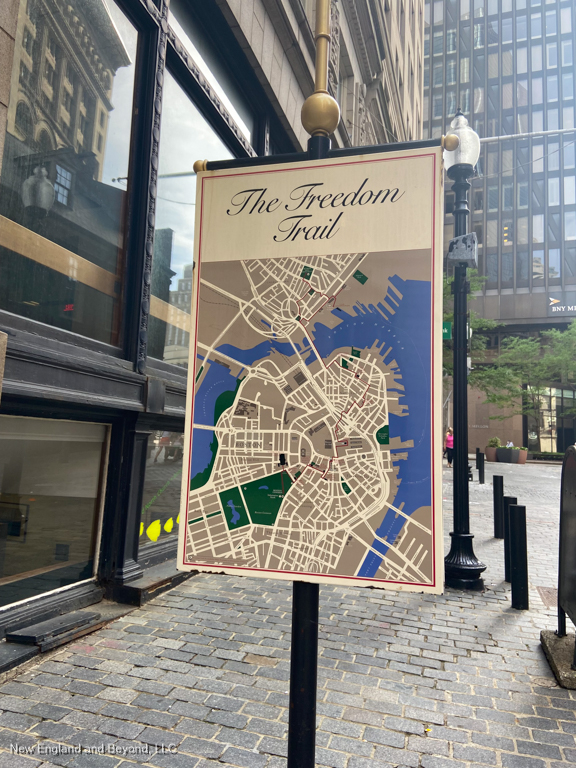
All you need to do is follow the red brick trail (or painted in some spots) throughout the city and look for the signs and markers at each historic site.
You’ll meander through the streets of Boston visiting historic homes, burial grounds, churches and monuments. You will even have the chance to tour the world’s oldest commissioned naval vessel still afloat.
The original idea for this iconic pedestrian trail came from William Schofield, a local Boston Herald journalist and Bob Winn, a member of the Old North Church. On June 11, 1951, their idea turned became a reality. The Freedom Trail was created so visitors had a clearly marked trail to the cities’ historic landmarks so they didn’t get lost.
About This Guide
This Guide gives you all the information you need to know for walking Boston’s popular Freedom Trail, including some great Insider Tips. Be sure to Bookmark this post so you can find it easily when planning your visit.
What You Need to Know About the Freedom Trail
Before you head out to explore these historic sites which helped define American history, here are a few things you should know:
- Where Does the Freedom Trail Start?
- Where does the Freedom Trail Take You?
- How long does it take to walk the Freedom Trail?
- How Do I Plan for Walking the Freedom Trail?
- What are the Sites on the Freedom Trail?
- Hitting the Trail
Where Does the Freedom Trail Start?
The Freedom Trail officially starts at Boston Common and ends at Bunker Hill in Charlestown, but you can explore these 16 landmarks in any order that works best for you.
Just follow the Red Brick Path and you will stay on course.

Where does the Freedom Trail Take You?
The Freedom Trail will take you on the path that our founding fathers took through some of Boston’s most popular areas. You’ll visit the Boston Common, Boston’s Historic Downtown and Waterfront, the North End and Charlestown.
To truly experience Boston, make sure you take some time to explore each of these great areas.
How long does it take to walk the Freedom Trail?
At 2.5 miles in length, you can complete the entire Freedom Trail in just a few hours but plan on covering much more ground. Some Freedom Trail sites offer tours for free or a small fee. If you plan on visiting any of the sites along the way, you can easily spend an entire day on the trail. Plan on at least 2-3 hours minimum. If you plan on visiting the museums or touring any of the sites on the route you will likely need more time.
Insider Tip: If you have time, I highly recommend splitting the trail up over 2 or more days. This allows you to better experience each area and may save you from some very tired feet and information overload.
How Do I Plan for Walking the Freedom Trail?
Do some research before hitting the trail and make a plan on which sites you may want to tour. You may want to purchase tickets before you go and some sites are not open everyday. Use this post along with the Official Freedom Trail brochure which is a handy resource listing official websites of each site and tour information.
Be sure to wear comfortable shoes and be careful on the brick and cobblestone pathways which can be uneven. Also bring along a bag or backpack with snacks, water and sweatshirt as it can get cool along the water – even in summer.
What are the Sites on the Freedom Trail?
There are 16 sites you will visit along the Freedom Trail:
- Boston Common
- State House
- Park Street Church
- Granary Burying Ground
- King’s Chapel & Burying Ground
- Boston Latin School Site & Ben Franklin Statue
- Old Corner Bookstore
- Old South Meeting House
- Old State House
- Boston Massacre Site
- Faneuil Hall
- Paul Revere House
- Old North Church
- Copp’s Hill Burying Ground
- USS Constitution
- Bunker Hill Monument
Hitting the Trail
To get started, we will begin at Boston Common, the official starting point of the Freedom Trail. But remember you can start at any site if that is more convenient for you.
Find your way over to the Boston Common Visitor Information Center located at 139 Tremont Street where you can grab a map and use the restrooms before heading out. Boston’s Official Freedom Trail Walking Tour departs from the visitor center and covers stops 1-11.

The Visitor Center is open daily year round. Visitor Centers are also located in Faneuil Hall and the Charlestown Navy Yard.
#1: Boston Common
Official Start of the Freedom Trail
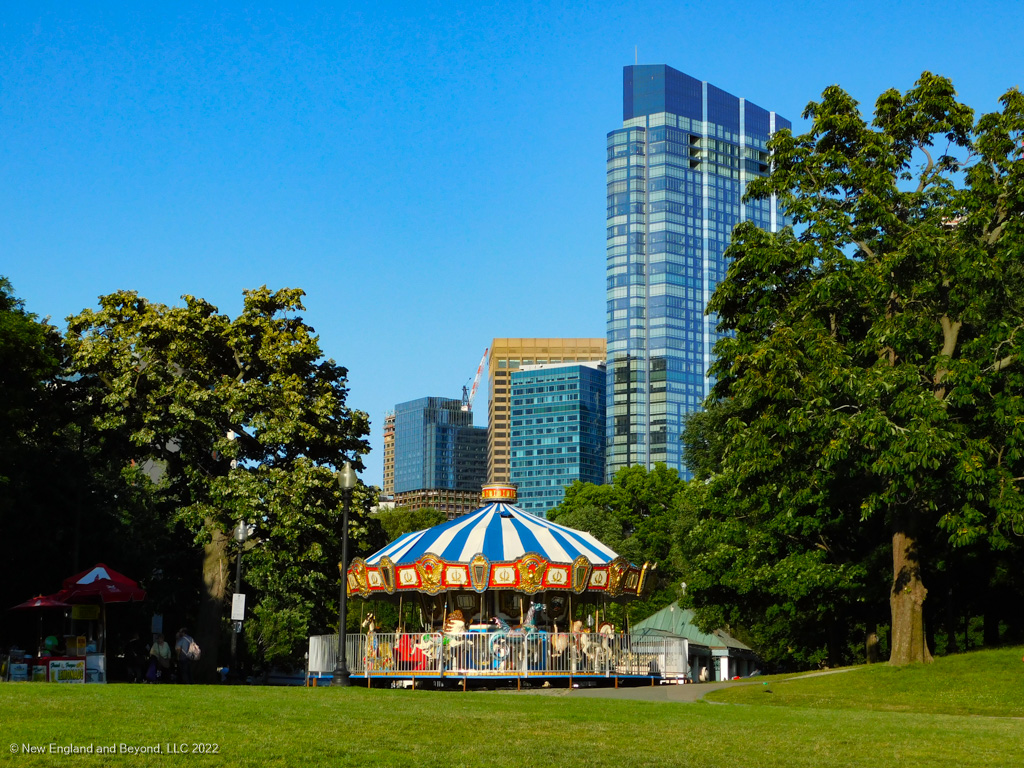
Established in 1634, Boston Common is considered to be the oldest public park in the United States. In Boston’s early days, this space was used for cattle grazing, an encampment for the British soldiers and even held public hangings. In 1987 the site became a National Historic Landmark.
Today, this 44 acre green-space is considered to be the heart of the city and is used year-round by Bostonians and visitors alike. In the warmer months, you’ll find people jogging the trails, playing ball or soaking up the sun. Kids have a blast at the Frog Pond Splash Park, Tortoise Playground and Vintage Carousel as well. The park is spectacular to walk through in the fall. In the winter, the pond becomes a popular ice skating rink.
Insider Tip: Visit Boston’s Public Garden which is located adjacent to the Boston Common across from Charles Street. This tranquil garden is my favorite green-space in Boston and should not be missed.
#2: The State House
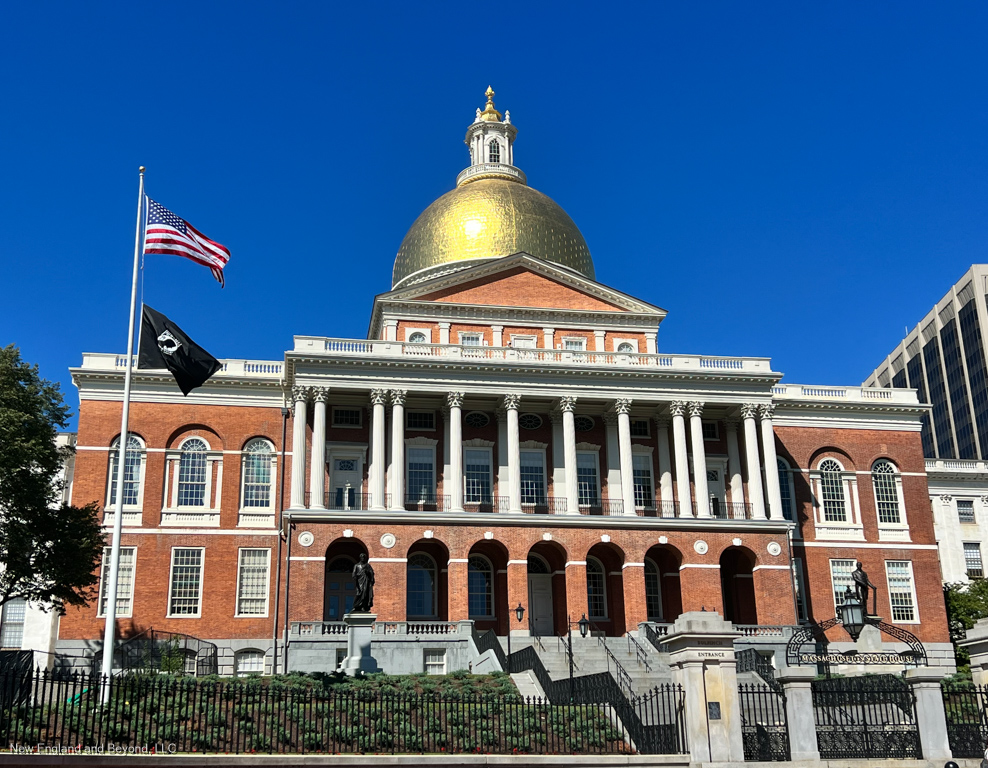
With its famous Gold Dome, the State House is quite an impressive site sitting atop Beacon Hill. Designed by Charles Bulfinch, this was the first major building he created before becoming one of America’s most famous architects. Construction began on July 5, 1795, with it’s cornerstone being set by Paul Revere and Samuel Adams, the State Governor at the time.
This magnificent Federal style building was completed in 1798 and is the oldest building on Beacon Hill. The dome was originally made from wood but Paul Revere’s company was commissioned to cover it in copper. In 1874, the 24 karat gold leaf was added, as it appears today.
Tour Info: Free guided tours of the State House (24 Beacon Street) are given daily Monday through Friday from 10:00 am — 3:30 pm. To book a guided in-person tour call 617-727-3676. To get an inside look, take a 360° Virtual Tour or Virtual Guided Tour. Tours leave from Doric Hall and last approximately 45 minutes.
#3: Park Street Church
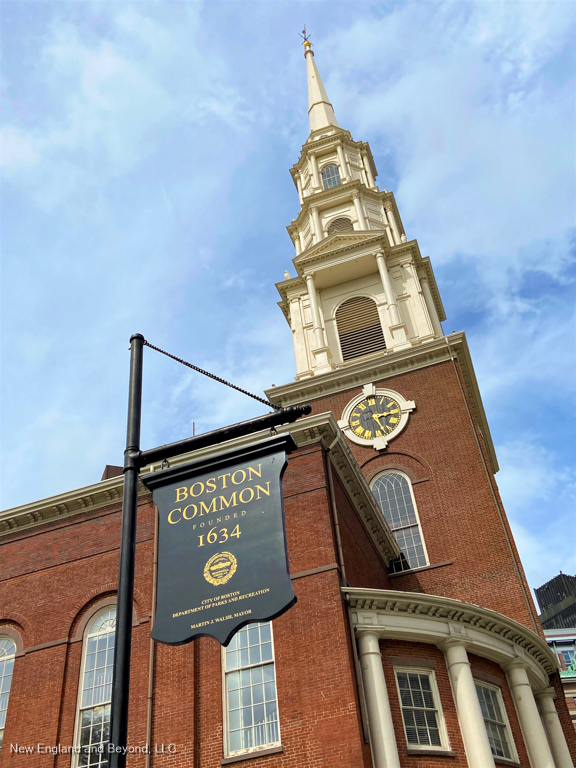
Next to Boston Common, on the corner of Tremont and Park Street, is Park Street Church. Once the site of the Old Granary, it was originally used for public grain storage. In 1809, the Old Granary was torn down and this impressive Park Street Church was erected.
The church played a key role in the movement to abolish slavery, as it was the site where abolitionist William Lloyd Garrison gave his first antislavery speech. This is also where the Hymn “America, My Country, Tis of Thee” was first sung.
The 217 foot steeple is one of the most beautiful in New England and was once the first landmark visitors saw when arriving in Boston. Today, the church continues to be a very active Evangelical church.
#4: Granary Burying Ground
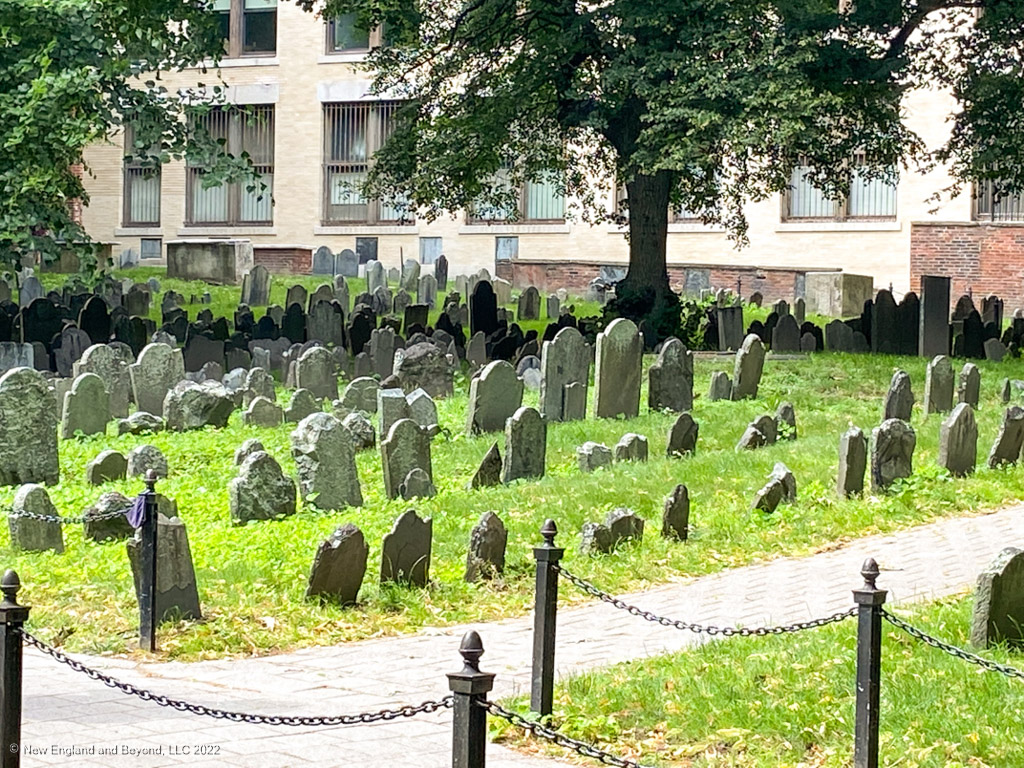
Behind Park Street Church, you’ll find the Granary Burying Ground. This is one of Boston’s oldest burial grounds, dating back to the 1660’s. Spend some time in this peaceful tree-lined cemetery exploring the inscriptions of over 2400 tombstones.
Here is the final resting place for a number of famous patriots and revolutionary heroes, including Samuel Adams, John Hancock, and Paul Revere. Other notable people buried here include Peter Faneuil, the wealthy merchant who built Faneuil Hall, Ben Franklin’s parents and the Boston Massacre victims.
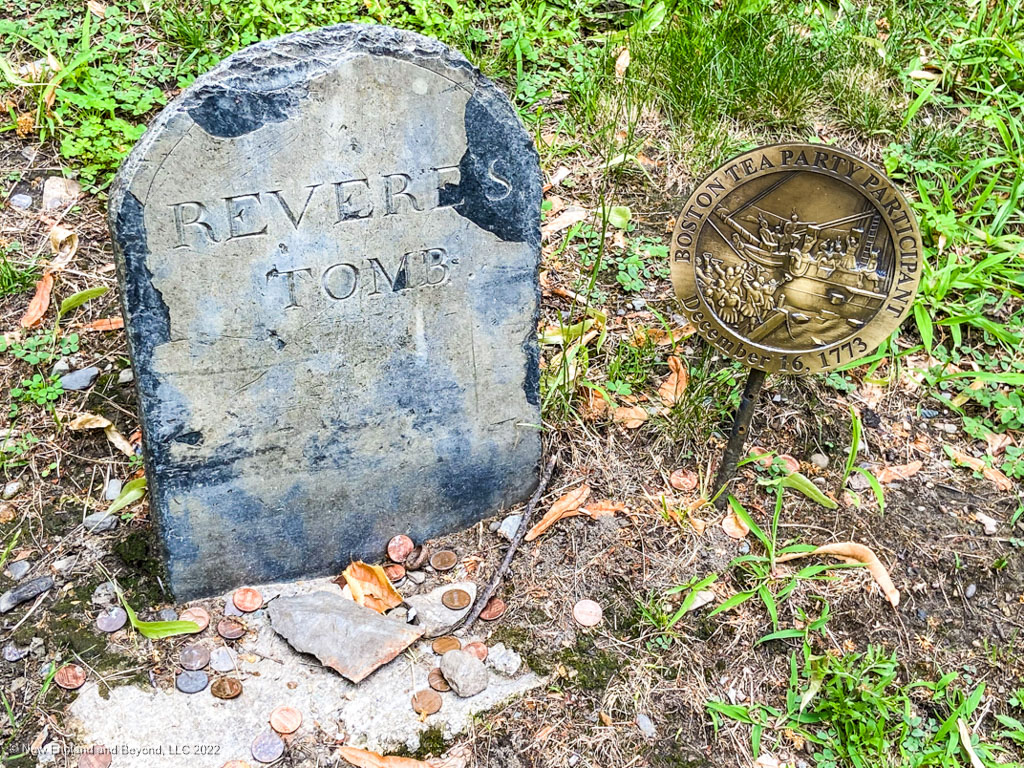
Tour Info: Free – Gates are open each day between 9:00 am and 4:00 pm and there is no entrance fee. A guide usually stands at the entrance to pass out a 16-page guidebook that visitors can use while inside. This was a great resource with interesting facts.
#5: Kings Chapel and Burying Ground
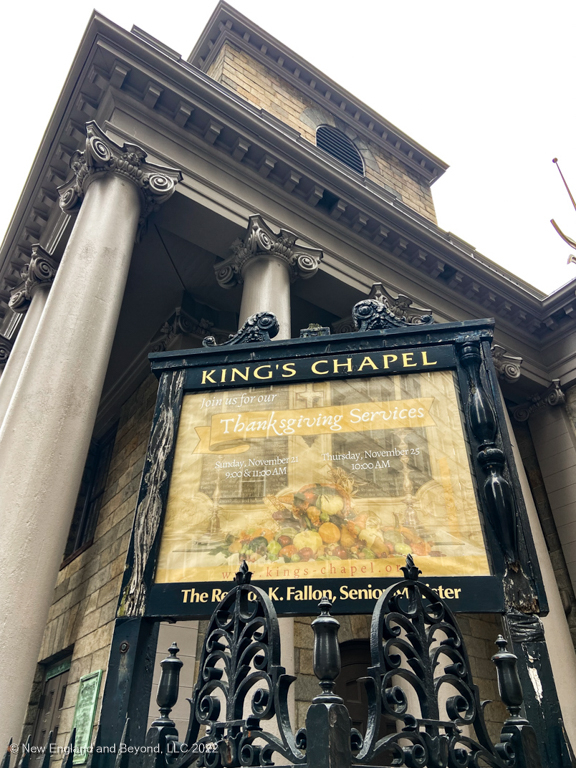
A short stroll from the Granary Burial Ground you will find King’s Chapel, the first Anglican church in New England. Established in 1686, it is one of the oldest churches in Boston and houses the oldest pulpit still in use in North America. The existing stone structure was built around the original wooden structure so worship services could continue during construction.
The interior was magnificently designed in Georgian architecture and is worth a visit when open. Its bell, which cracked in 1814, was recast by Paul Revere in 1816 and still rings today. King’s Chapel became a Unitarian church in 1785.
Tour Info: There are several tours you can take of the chapel, including the Bell and Bones tour and Art and Architecture (Sundays). Every Tuesday there are music recitals at 12:15pm with various performers.

King’s Chapel Burying Ground is Boston’s oldest graveyard where many of the first generation of colonialists are buried. Notable people who rest here include Charles Bulfinch, the famed State House architect and Boston’s first governor, John Winthrop.
#6: Boston Latin School Site / Benjamin Franklin Statue
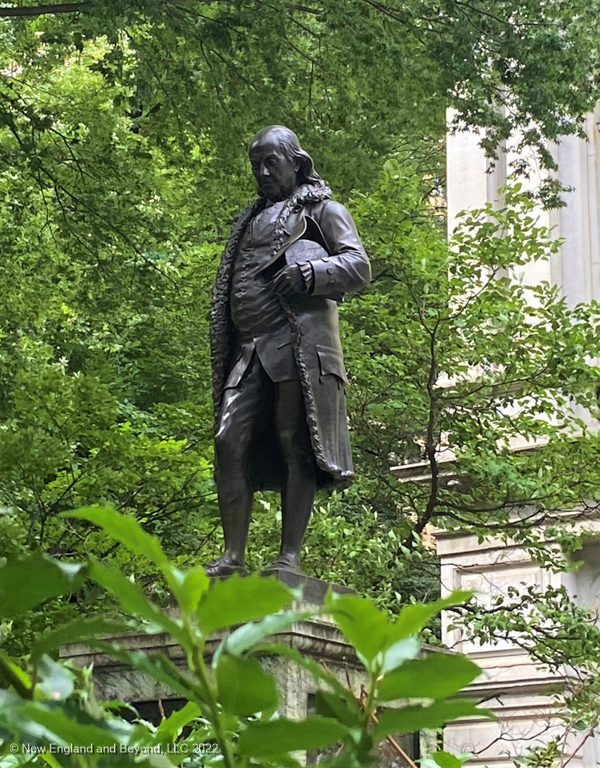
Founded in 1635, Boston Latin School was the first public school in America and has been educating students for almost 400 years. The original building was torn down in 1745. After moving locations several times, the school is now located in the Fenway area. Today, the Old City Hall sits in this location and is used for office and retail space, including Ruth’s Chris Steak House.
In front of Boston’s Old City Hall stands an 8 foot bronze statue of Benjamin Franklin, commemorating the school’s most famous student.
#7: The Old Corner Bookstore
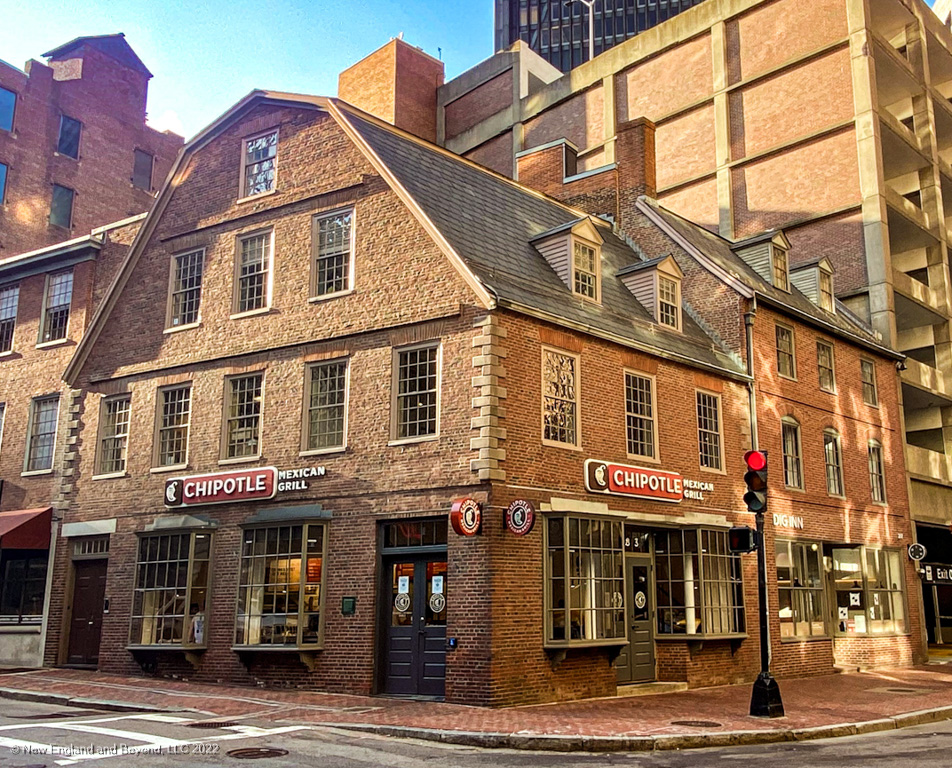
The Old Corner Bookstore is one of the oldest brick structures in Boston. Built in 1718, the building was originally used as an apothecary.
Later, several booksellers and publishers resided in the building. During that time, some well-known classic literary works were published here, including The Scarlet Letter and The Star Spangled Banner. Famous authors like Ralph Waldo Emerson, Nathaniel Hawthorne, Charles Dickens, Mark Twain and Harriet Beecher Stowe would also meet here to share ideas.
In the 1960’s, this historic building almost became a parking garage, but the Historic Boston Incorporated (HBI) organization stepped in to save the building and restored it in 1970.
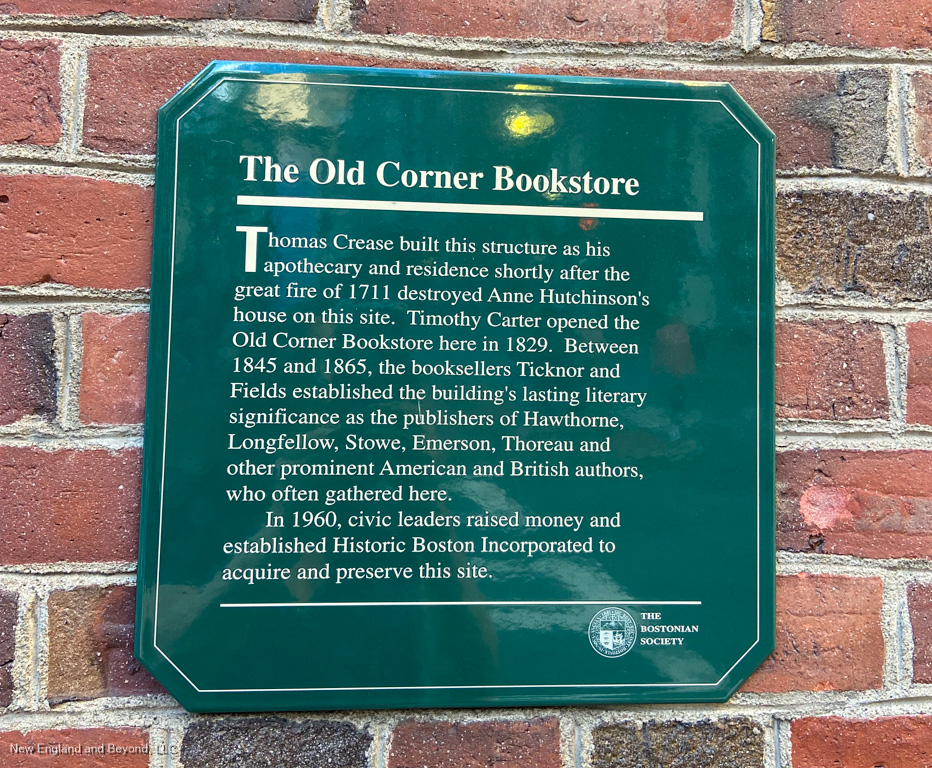
Today, the building is occupied by Chipotle, a fast-food restaurant, and is the only site on the Freedom Trail that is completely commercial. The only reminder of its past is a small plaque on the side of the building. In 2017 there was a petition to turn the building back into a museum. Unfortunately that has not come to fruition.
#8: Old South Meeting House
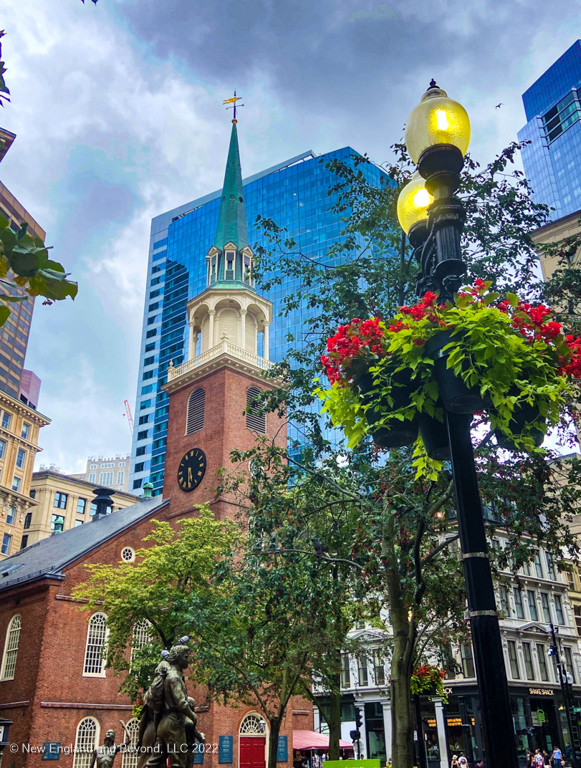
The Old South Meeting House is an iconic Boston landmark which was used as a meeting place for colonists to debate their concerns about British rule.
On December 16, 1773, over 5,000 men crowded into the meeting house to protest the controversial tea tax. This is when Samuel Adams triggered the Boston Tea Party. By uttering a special code, he instructed the Sons of Liberty to take action, dumping loads of tea into Boston Harbor.
Since 1877, the Old South Meeting House has been a museum and is still used for meetings and gatherings today. The clock inside the tower is the oldest American-made tower clock in operation at its original location in the nation.
Tour Info: The Old South Meeting House is open to the public for general admission but you will need to reserve an entry ticket online. The $15 fee provides entry to both the Old State House (206 Washington St.) and Old South Meeting House (310 Washington St.). Discounted tickets for seniors, students and children under 12 are available.
#9: Old State House

The Old State House is Boston’s oldest public building and was once known as the “Town House”. In its early days, the building was used by the Massachusetts government and courts and used as a Merchant’s Exchange.
The Old State House is the site of the Boston Massacre and where the Declaration of Independence was first read in 1776 from the east balcony.
Today, this historic structure is a museum which showcases items which help tell the story of Boston’s role in the Revolutionary War. Be aware that the museum is not currently handicap accessible and you will need to climb a spiral staircase with 30-40 stairs. Beneath the building is the State Street T station.
Insider Tip: Visiting in July? Every 4th of July there is an annual reading of the Declaration of Independence.
Tour Info: The Old South Meeting House is open to the public for general admission but you will need to reserve an entry ticket online. The $15 fee provides entry to both the Old State House (206 Washington St.) and Old South Meeting House (310 Washington St.). Discounted tickets for seniors, students and children under 12 are available.
#10: Boston Massacre Site

With tensions mounting, the clash between the British and Patriots came to a head on March 5th, 1770. This is when British soldiers opened fire on a crowd of unarmed colonists, killing 5 men under the East Balcony of the Old State House.
Known as the Boston Massacre, this event is considered the first bloodshed of the American Revolution as it escalated disputes between the British and colonists which led to the Revolutionary War.
In front of the Old State House you will find a ring of brass and cobblestones built into the pavement. This marker at the intersection of Washington and State Streets serves as a reminder of the event that sparked the Revolutionary War.
Insider Tip: Visiting during March? Each March special reenactments of the Boston Massacre are held to commemorate the event.
#11: Faneuil Hall
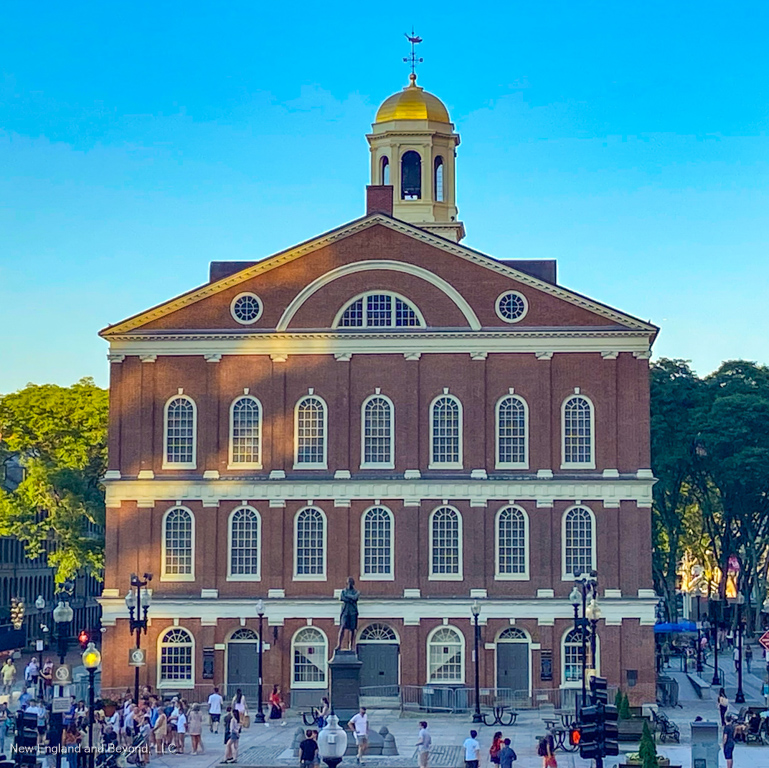
Built in 1742, Faneuil Hall is a four-story brick building which was a gift to Boston from wealthy merchant Peter Faneuil. It served as a marketplace and meeting hall where colonists protested British authority and taxes.
Faneuil Hall played an important role in history. It is considered to be America’s first town meeting hall and was known as the “Cradle of Liberty”. It is here where James Otis and Samuel Adams gave impassioned speeches against the Stamp Act, coining the slogan, “No Taxation without Representation”.
Today, Faneuil Hall is one of four historic buildings which make up Faneuil Hall Marketplace, also commonly known as Quincy Market.
If you look on top of the cupola, you will see the famous “Golden Grasshopper” weather vane. It is said to be a replica of one at the Royal Exchange in London.
Stop inside the Faneuil Hall Visitor Center to visit the free museums or browse the gift shop. You can also visit the Great Hall on the second floor when not in use and the Ancient and Honorable Artillery museum on the fourth floor. Public restrooms are located downstairs.
Top 10 Must Do Activities When You Visit Faneuil Hall
Insider Tip: Faneuil Hall is a great place to take a break and grab a snack or lunch at one of the many restaurants in the area. But if you are looking for some great Italian food, definitely hold off and continue to the North End.
#12: Paul Revere House
From Faneuil Hall you will follow the trail into the North End to the quaint little North Square, where you will find a small wooden house where Paul Revere once lived.
On this leg of the trail, keep an eye on the brick path as it gets a bit confusing, especially if the sidewalks are crowded in the North End.
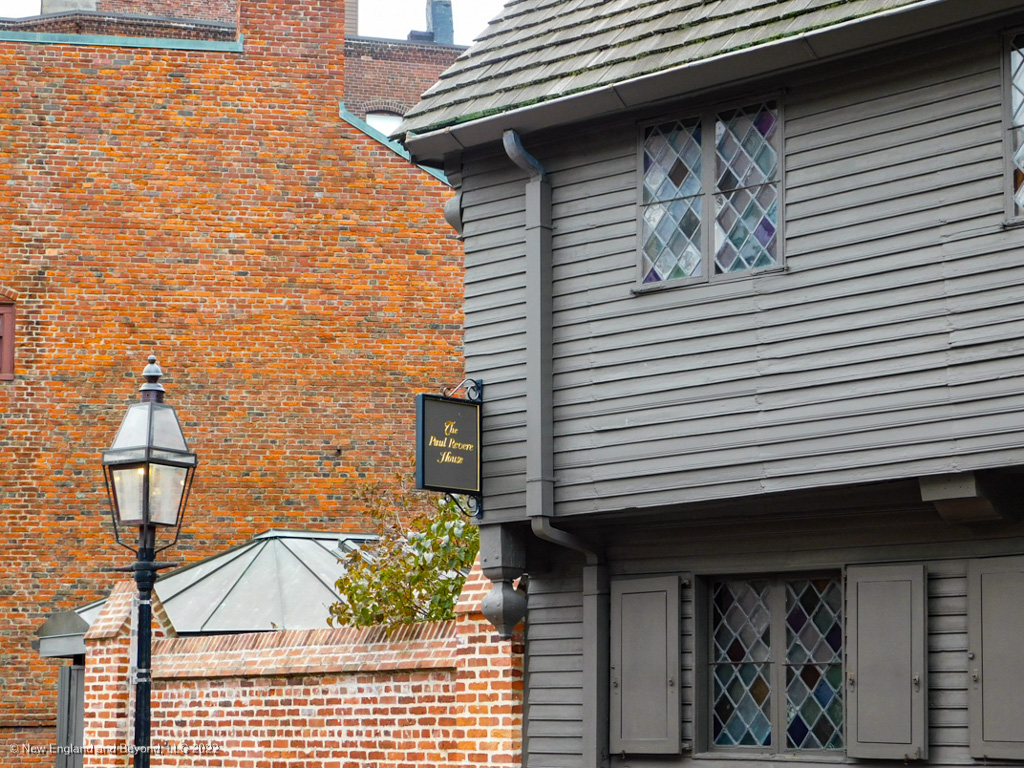
On the night of April 18, 1775, Revere left this house for his famous Midnight Ride.
Revere owned this house from 1770 until 1800. After being sold, it was used for a boarding house for sailors, an immigrant rooming house. Later it housed a variety of shops, including an Italian bank, candy store, cigar company and fruit and vegetable business.
In 1902, Revere’s great-grandson purchased the house back and renovated it. The house was opened back up as a museum in 1908.
Tour Info: You can tour the inside of the house daily during the spring, summer and fall. Closed Mondays January-March. Admission is $6.00. There is a reduced cost for students and seniors. Children ages 5-17 can visit for the bargain price of $1.
#13: Old North Church
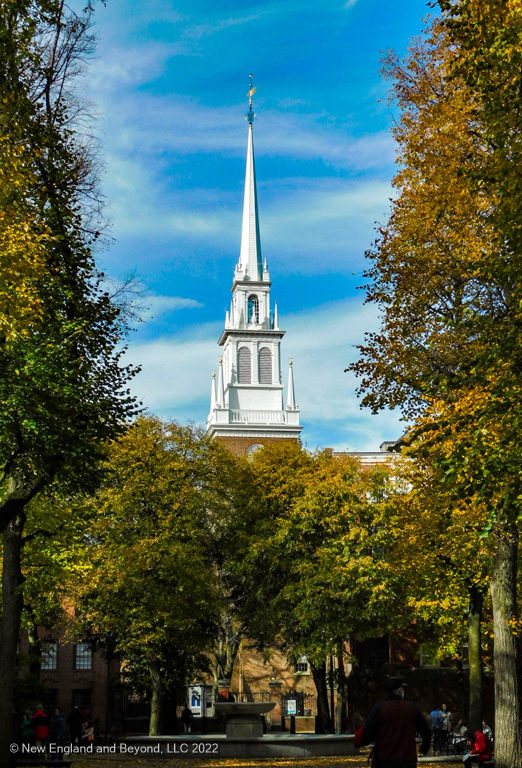
The Old North Church is Boston’s oldest church and most famous for its role it played in the start of the Revolutionary War.
On April 18, 1775, Paul Revere instructed Robert John Newman, a fellow Patriot and the church’s sexton, to hang two lanterns in the bell tower. The lanterns were to signal the Charlestown Patriots that the British soldiers were heading to Lexington and Concord by way of the Charles River.
Paul Revere then crossed the Charles by boat and set off on his famous midnight ride to warn Patriot leaders John Hancock and Samuel Adams and the people of Concord that the British were coming. Revere was ultimately captured outside of Lexington, before making it to Concord.
Fun Facts:
- While Paul Revere is the most famous rider, there were actually five riders sent out that night: Paul Revere, Samuel Prescott, Israel Bissell, William Dawes, and Sybil Ludington.
- The phrase, “one if by land, two if by sea” was coined from Henry Wadsworth Longfellow’s poem “The Midnight Ride of Paul Revere”.
- The lanterns on display in the church are only replicas. The original lanterns can be viewed at the Concord Museum.
Tour Info: The Old North Church is one of the Freedom Trail’s most visited historical sites and is open to visitors Tuesday – Saturday from 10:00 am – 5:00 pm and Sunday from 12:30 pm – 5:00 pm. Entry fee $5.00. You can tour the house, its courtyards, gardens and the gift store located in the chapel.
#14: Copp’s Hill Burying Ground
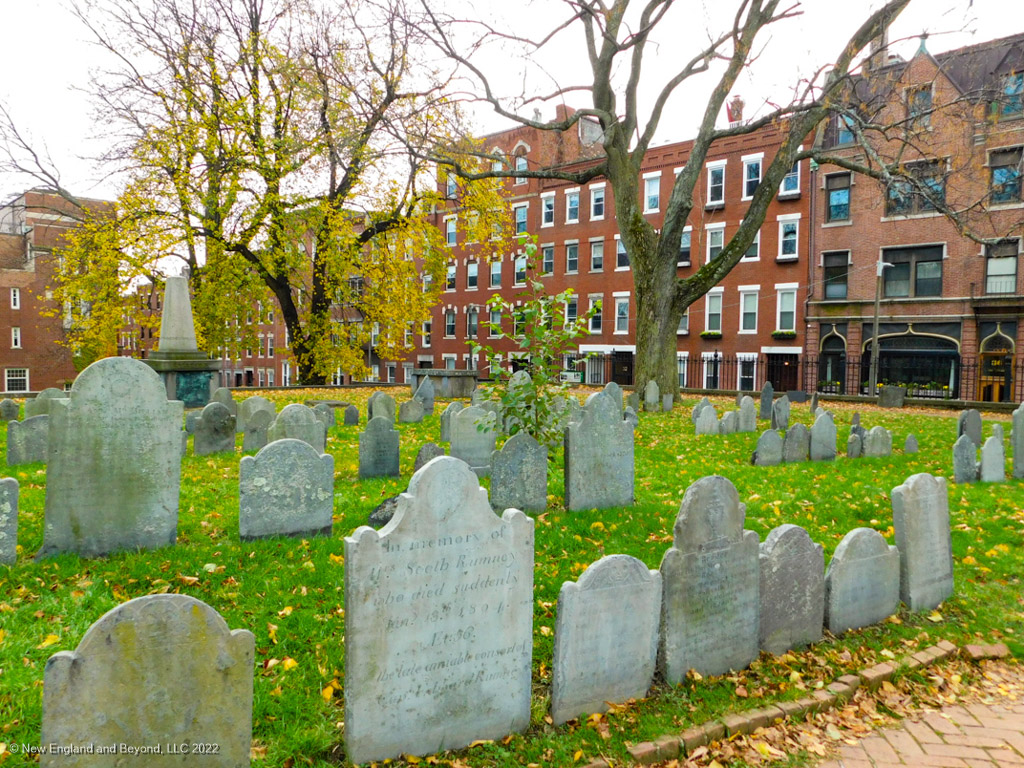
Overlooking the Harbor, just a block away from the Old North Church is the Copp’s Hill Burying Ground, the final resting place of more than 10,000 early merchants, artisans, and craftspeople.
It is believed that the British used the tombstones for target practice during the Revolutionary War while awaiting the Battle of Bunker Hill.
Across the street from the cemetery is the “Spite House“, the skinniest house in Boston which was created out of Spite.
Insider Tip: The next site is a 20-30 minute walk across the Charlestown bridge to the Charlestown Navy Yard. Currently, there is a temporary walkway while construction of a new bridge is underway. Depending on the time, you may want to consider saving this leg of the trail for another day as there is lots to do and see at the Navy Yard. There is also a Ferry that runs from Long Wharf to the Navy Yard if you prefer not to walk.
#15: USS Constitution
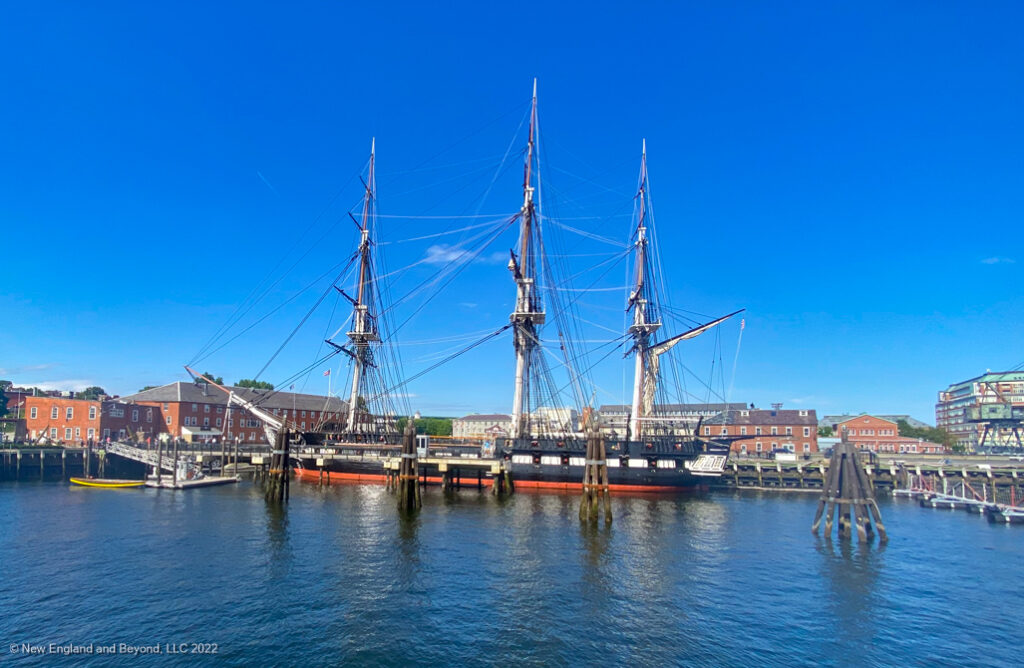
As you enter the Charlestown Navy Yard you will be welcomed by the USS Constitution, the world’s oldest commissioned warship still afloat. This magnificent 204 foot-long wood-hulled ship, known as “Old Ironside” was one of six ships commissioned by George Washington in 1794.
The ship was built at Hartt’s shipyard, right in the North End. After two failed attempts, the ship finally launched into Boston Harbor on October 21, 1797.
The historic 18th century frigate served as a warship in the War of 1812, fighting in several battles. During the Civil War, the US Naval Academy used the ship for training and the ship was retired in 1881. Old Ironsides has been docked at the Navy Yard since 1897 and in 1907 was designated as a museum.
Fun Facts:
- The ship earned its nickname “Old Ironsides” when sailors noticed several cannonballs bouncing off the ship’s side during a battle with a British ship.
- In 1830, the historic frigate was slated to be demolished as it was no longer seaworthy. Upon learning about the ship’s fate, Oliver Wendell Holmes wrote the poem “Old Ironsides” which rallied the public to petition against its demise.
- Each 4th of July, the ship makes her annual turn-around cruise in Boston Harbor, where she will sail to Fort Independence on Castle Island, give a 21-gun salute and then turn around and go home to the Navy Yard. A lottery is held and 150 lucky people and a guest get to take the ride.
Tour Info: Visitors are welcome to tour the first 3 floors of the ship throughout the year Friday – Sunday, 10:00 am – 6:00 pm. Across from the Constitution is the USS Cassin Young, a 374 foot navy destroyer which you can also explore. Admission to the Constitution and USS Cassin Young is free.
All visitors must pass through a security check and anyone 18 and older must present a valid government issued photo ID. Wheelchairs, walkers, scooters, and strollers are not allowed on board.
Be sure to stop into the Constitution Museum as it does a great job telling the history of the Constitution through its exhibits and interactive activities and is well worth the visit. There is a voluntary suggested entrance fee of $5-15.
#16: Bunker Hill Monument
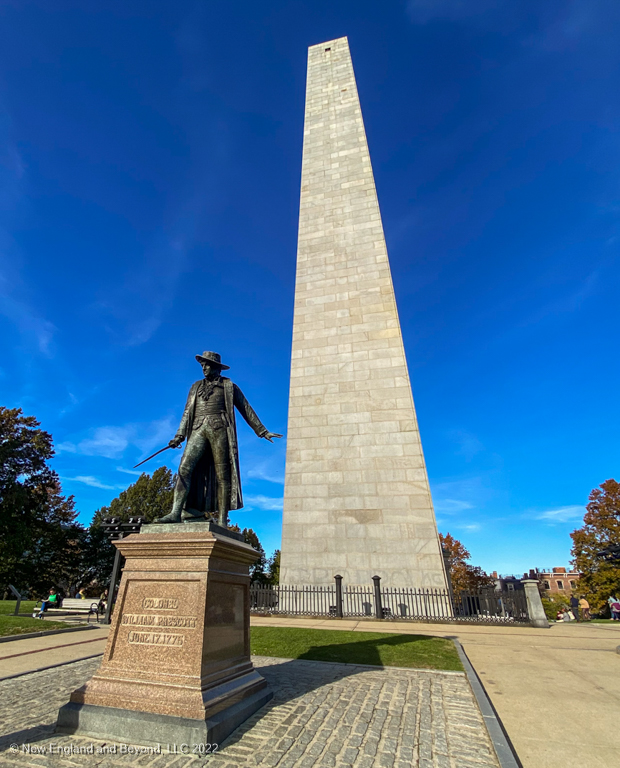
The last stop on the Freedom Trail is the Bunker Hill Monument which is a 10-15 minute walk from the Charlestown Navy Yard.
Located on Breed’s Hill, a 221 foot granite obelisk stands to commemorate “The Battle of Bunker Hill” which was fought on the site on June 17, 1775. Although commonly referred to as the Battle of Bunker Hill, most of the fighting really occurred on Breed’s Hill.
This battle is considered one of the bloodiest battles of the American Revolution. The Patriots were able to hold back the British through two battles while killing or wounding half of the 2200 Redcoats in less than two hours of fighting. The Patriots finally succumbed and surrendered after running out of ammunition. While the battle was lost, the Patriots gained a well-needed morale victory.
Construction of the monument first started in 1827 but it was not completed until 1842. The statue in front of the obelisk of Colonel William Prescott, was erected in 1881. Prescott is known for the famous saying “Don’t fire until you see the whites of their eyes.”
The monument has 294 steps with an observation deck at the top where you can enjoy stunning views of Cambridge and Boston.
The Bunker Hill Monument is open to climb again following Covid-19. Only 20 people are allowed in the Monument at a time and the last climb is 30 minutes before closing. Visit the National Park Service for Bunker Hill Monument and Museum hours. Due to renovations, there may be potential unexpected closures through the end of 2023.
Don’t forget to stop by the Bunker Hill Museum across the street.
Insider Tip: Consider walking the Freedom Trail backwards, starting at Stop 16 – Bunker Hill. This will get the long walking stretch out of the way early when you are not so tired. If the monument is open, you can also climb the to the top. If you complete the entire trail you will end up at the Boston Common and Boston Public Garden where you can relax.
The Bottom Line
The Boston Freedom Trail is one of the best ways to explore Boston and learn about its history. There are so many ways to experience it. Take one of the many tours or explore on your own. No matter what you choose, you are sure to enjoy learning about the history of this incredible city.
If you have time, take a tour or visit the museums along the Freedom Trail.
- The Old South Meeting House and Old State House both have museums open to the public. Tickets are available through Revolutionary Spaces $15 to visit both The Old State House (206 Washington St.) and Old South Meeting House (310 Washington St.).
- Faneuil Hall Visitor Center has museums on several floors and all are Free
- Paul Revere House – Walk through the house to see life in 1770’s – $6.00
- Constitution Museum – Learn all about Old Ironsides through interactive exhibits – Donation suggested
- Bunker Hill Museum – Learn about the Battle of Bunker Hill and the monument – Free
Visit the National Park Service for the latest information on site schedules and closures.
Explore More…
Ultimate Guide to Boston for First Time Visitors
Top 10 Must Do Activities When You Visit Faneuil Hall
